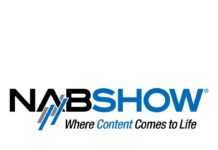
(By Bob McCurdy) I was recently speaking with a local auto dealer who indicated sales were “fine” but that he was somewhat concerned about radio’s ability to generate floor traffic.
I asked how he was able to determine this and his response was, “I ask those that come into the dealership where they heard about us.” Simple enough, completely logical, but not completely legit and dangerous to the proper allocation of a media budget.
While it’s difficult to isolate any medium’s actual “direct” or “indirect” impact, even for the largest of national advertisers, it’s a particularly vexing challenge locally.
I suggested that he should exhibit some caution when reviewing these results, highlighting that:
— Numerous studies have consistently found that even if a brand/business has never advertised on TV, it was not uncommon for the advertising recalled to be attributed to television. For those who have advertised on TV, this misattribution was even more pronounced. This type of media misattribution is not fiction and is a well-known fact within the advertising research community.
— This dealer smartly deployed similar creative elements in both TV and radio, which is clearly the right thing to do from a marketing standpoint but it likely worked to radio’s disadvantage in his questioning. I then broached how he could take advantage of the considerable audio equity generated due to his radio creative flowing from his TV’s via-imagery transfer, keeping TV messaging fresh in the consumer’s mind through media misattribution. Utilizing sound (radio) to trigger the visual (TV) at radio pricing. In general, many legacy TV advertisers, with recognizable tag lines, voices, etc. allow this audio equity to go under-leveraged. Imagery transfer is real.
— The majority of his ad dollars were allocated to TV which contributed to a huge share-of-mind advantage, so the results of his questioning should not be surprising. Media Monitors enabled me to highlight this fact.
— TV is the de facto “expected” medium so it tends to dominate consumer’s recall of advertising even if care is taken to dig further into questioning. This clouds results. From a daily “time use” standpoint, the average consumer spends more than twice as much time with TV as they do with radio, so it is no surprise that TV would perform well in any such “survey.” I stressed that “expected” doesn’t always reflect reality, and in this case any overstatement of TV’s contribution means an understatement of radio’s.
— Advertising is just not that important to most consumers, with many trying to avoid it, so asking them where they heard or saw an ad and acting upon their answers is at best a high-risk exercise.
I followed up with another example of consumers having difficulty responding accurately to media-related questions by highlighting a finding from a study overseen by the Council for Research Excellence. The CRE mobilized Ball State University research teams and equipped them with handheld smart keyboards having them shadow participants, recording in 10-second intervals their media exposure. The following day these same participants were asked to recall and quantify their previous day’s media usage. Their “recalled” radio usage was 30% lower than observed, while “Online and portable video duration tended to be overstated to an extreme.” Discussing the study, Ball State researcher Mike Bloxham said, “Among the things I learned from those experiences is that people generally cannot report accurately how much time they spend with media. Some media tend to be over-reported whereas others tend to be under-reported — sometimes to an alarming extent.”
While not directly related to media survey “misattribution,” it did highlight and reinforce the huge chasm that exists between the “recalled” and the “actual.”
I continue to stress that it’s the synergy that exists within the media mix that is the key ingredient in his advertising’s success and the results generated are greater than the sum of its individual parts however they be quantified.
Bob McCurdy is The Vice President of Sales for The Beasley Media Group and can be reached at [email protected]






The client has to have a viable product or service to use any advertising medium — including radio successfully. If a restaurant serves bad food, has bad service, or is in a poor location, it will fail. It’s not radio’s fault (although we will be blamed.) We are only the messenger — not the product or service. Be careful what you tell clients!!
In other words, and I think Bob would agree: “Influence” and “recall” do not live in the same county.
For years I supplied copy, voicing and remotes to the largest and most prosperous furrier in the city. (Before fur was a politically incorrect product.)
To get paid, every sales associate had to have their customer respond to the store’s media awareness survey.
My client was a huge multi-media buyer who would mix, match or load up on a single medium.
The results of the surveys were always the same: The majority claimed Print as their best-recalled medium. Way, way down the list radio and TV were recalled. It mattered not whether the furrier was only using radio for a time. The survey results always remained consistent.
The key is to present this information, and frame it so it don’ sound like weighted, favoured B.S. Tough row to hoe. But, still accurate.
This article is all theory and opinion, though well-articulated. It is not difficult to determine a specific radio station’s or specific advertising product’s performance. Car dealers (and others) are now assigning specific phone numbers and/or specific URL’s to each radio station on the buy. … And as long as your station is keeping the commercial breaks reasonable and not doing long cluster breaks where the listeners tune out en masse (meaning that the advertiser’s message isn’t even heard), your station’s performance should be more than good.
Fair point, and a useful practice. But what about when someone doesn’t respond directly from a radio ad? Maybe they continue their drive home and see the tv ad and then get on the internet. Then they attribute the last media they experienced (internet) as the answer to “How’d you hear about us?” So many variables! As Bob said…vexing.